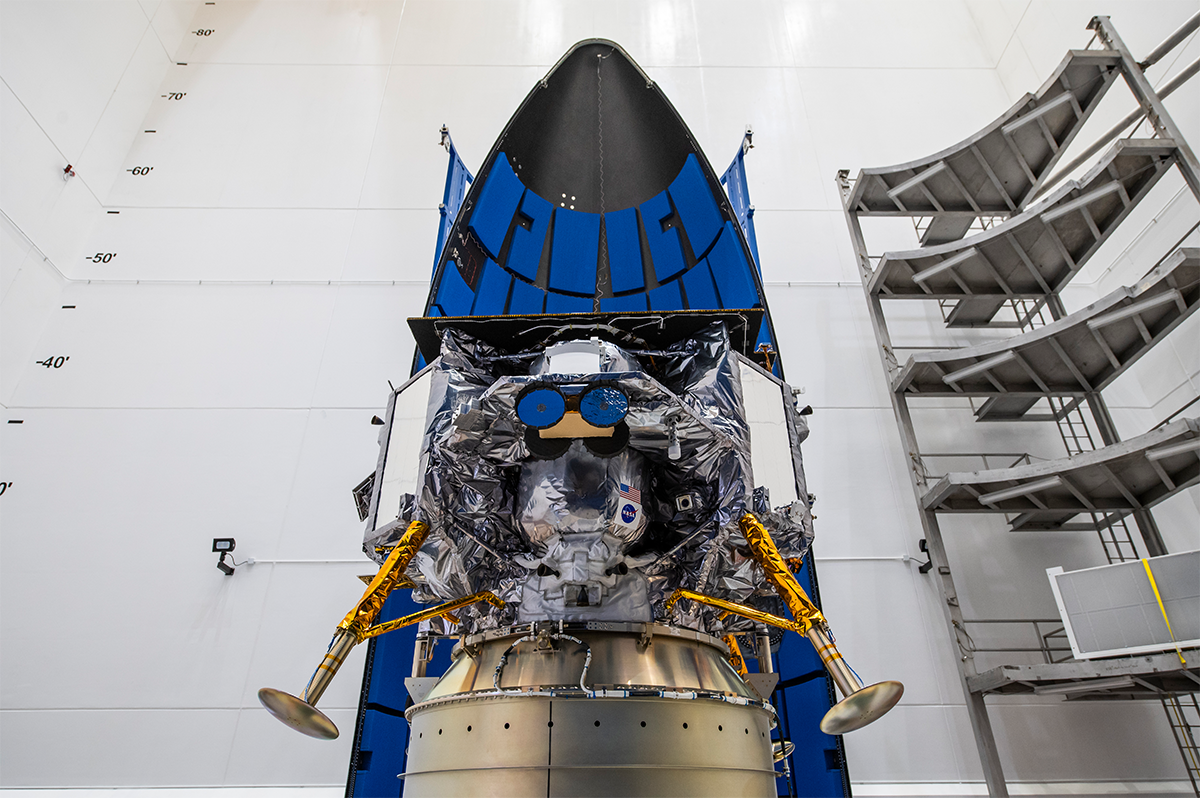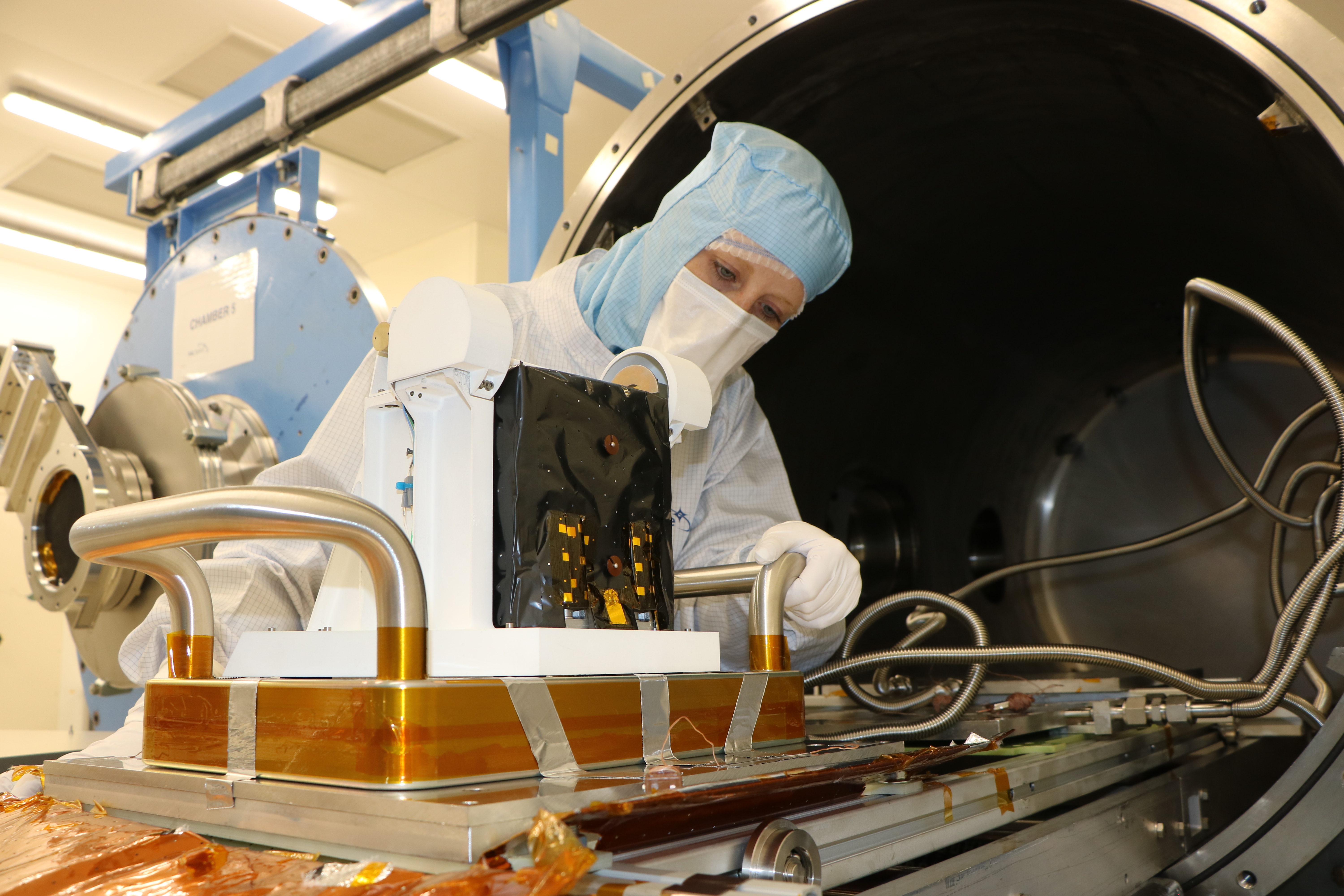The instrument, called the Peregrine Ion Trap Mass Spectrometer (PITMS), was developed in collaboration with STFC RAL Space, The Open University (OU) and NASA's Goddard Space Flight Center (NASA GSFC), funded through UK Space Agency and European Space Agency.
The instrument aims to determine the composition of trace gases in the exosphere, as well as look for water and other volatile compounds that could prove vital for establishing crewed bases on the Moon.

The Peregrine Lunar Lander fuelled and integrated with ULA’s Vulcan rocket. Credit: Astrobotic
Understanding Lunar Conditions
PITMS will operate for half a lunar rotation, about 14 days on Earth, and conduct measurements under various temperature conditions to capture the impact of the lunar lander's exhaust and of rovers disturbing soil throughout the mission.
These measurements will be crucial in understanding how the Moon volatiles respond to disturbances like rocket exhausts. Additionally, they will provide insight into lunar resources such as water, which is essential for sustainable human space exploration.
Instrument Development Leadership
RAL Space, as part of a team led by the OU, was responsible for the overall mechanical, thermal, software, and electronic design of the Exospheric Mass Spectrometer, a key element of the PITMS instrument.
The RAL Space team were also responsible for testing the PITMS instrument to ensure it would survive the journey to the Moon and work on the lunar surface, before shipping it back to NASA in 2021.

PITMS completing testing at STFC RAL Space before being shipped to NASA. Credit: Open University, STFC RAL Space, NASA Goddard Space Flight Centre.
Long Lasting Legacy
Commenting on RAL Space's contribution, Prof. Mark Thomson, Executive Chair of STFC, says:
“Ambitious plans for future space exploration, including crewed missions to the Moon and Mars, will need to be informed by new scientific data. The cutting-edge instrumentation on the Peregrine Lunar Lander will gather essential data from the surface of the moon, paving the way for future manned missions that will inspire the next generations. STFC and RAL Space are proud to have been able to provide our world-leading expertise in space technology to contribute to the success of this mission."
Christopher Howe, Production and Software Group Leader at RAL Space, said:
“The use of the Moon's water could prove vital for future human endeavours in space, so we're incredibly proud to have had the opportunity to help develop PITMS and are delighted to see it safely on its way. The technology from PITMS will now help underpin instruments on future missions, such as the Rosalind Franklin Rover, so whilst PITMS will only operate for one lunar day on the moon, its legacy will be felt for years."
Worldwide Collaboration and Expertise
This project represents a longstanding collaboration between RAL Space, the OU, and NASA GSFC, which aims to advance our understanding of the Moon. The important work conducted in the UK was supported by the UK Space Agency's membership of the European Space Agency.
PITMS is a NASA-Provided Payload, (Principal Investigator: Dr. Barbara Cohen, NASA Goddard Space Flight Center). The delivery of the instrument, by Astrobotic Technology through NASA's Commercial Lunar Payload Services initiative, is an important milestone that will enable NASA's Artemis program to deliver its ambitious program of science and exploration – to send humans to the Moon and then to Mars.
